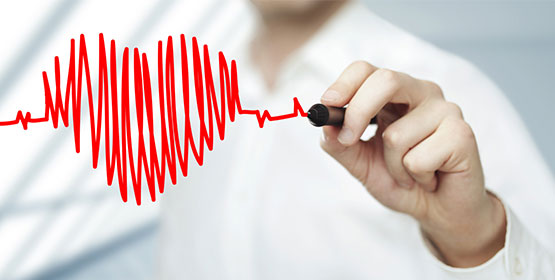
Blood pressure is not a disease related to heart. What is the function of the blood? Giving the necessary energy (food) to each cell! The necessary speed and pressure required to circulate blood all over the body is given by the heart. This is normal circumstance. Let us consider an organ is affected or is under-performing. This organ needs enough pure energy (glycogen) to recover. From where does it get this energy? Only through blood! There is an emergency to supply energy (blood) to the particular organ. Now the heart gives the required pressure so that the blood reaches the organ.
When does this heart rate and pressure reduce? When the requirement is met! Is blood pressure a disease or is the stagnant waste and affected organs a disease? Is the heart the cause for blood pressure? We send drugs for BP into our body to reduce the function of our heart. When our immunity increases, again the blood pressure increases. Intake of drugs reduces it. There are situations of low blood pressure, due to this. If we diagnose disease with the help of machines or equipment, we will never conclude and end disease. Equipment can detect only chemical changes in our body.
In the name of treatment, we inflict different methods of suffering on our body. All these are tolerated by our soul! This medical treatment can never see or understand the soul.
Blood is carried from the heart to all parts of your body in vessels called arteries. Blood pressure is the force of the blood pushing against the walls of the arteries. Each time the heart beats (about 60–70 times a minute at rest), it pumps out blood into the arteries. Your blood pressure is at its highest when the heart beats, pumping the blood. This is called systolic pressure. When the heart is at rest, between beats, your blood pressure falls. This is the diastolic pressure.
Blood pressure is always given as these two numbers, the systolic and diastolic pressures. Both are important. Usually they are written one above or before the other, such as 120/80 mmHg (measured in millimeters of mercury, a unit for measuring pressure). When the two measurements are written down, the systolic pressure is the first or top number, and the diastolic pressure is the second or bottom number (for example, 120/80). If your blood pressure is 120/80, you say that it is "120 over 80."
Blood pressure changes during the day. It is lowest as you sleep and rises when you get up. It also can rise when you are excited, nervous, or active. Still, for most of your waking hours, your blood pressure stays pretty much the same when you are sitting or standing still. That level should be lower than 120/80 mmHg. When the level stays high, 140/90 mmHg or higher, you have high blood pressure. With high blood pressure, the heart works harder, your arteries take a beating, and your chances of a stroke, heart attack, and kidney problems are greater.










Book an Appointment